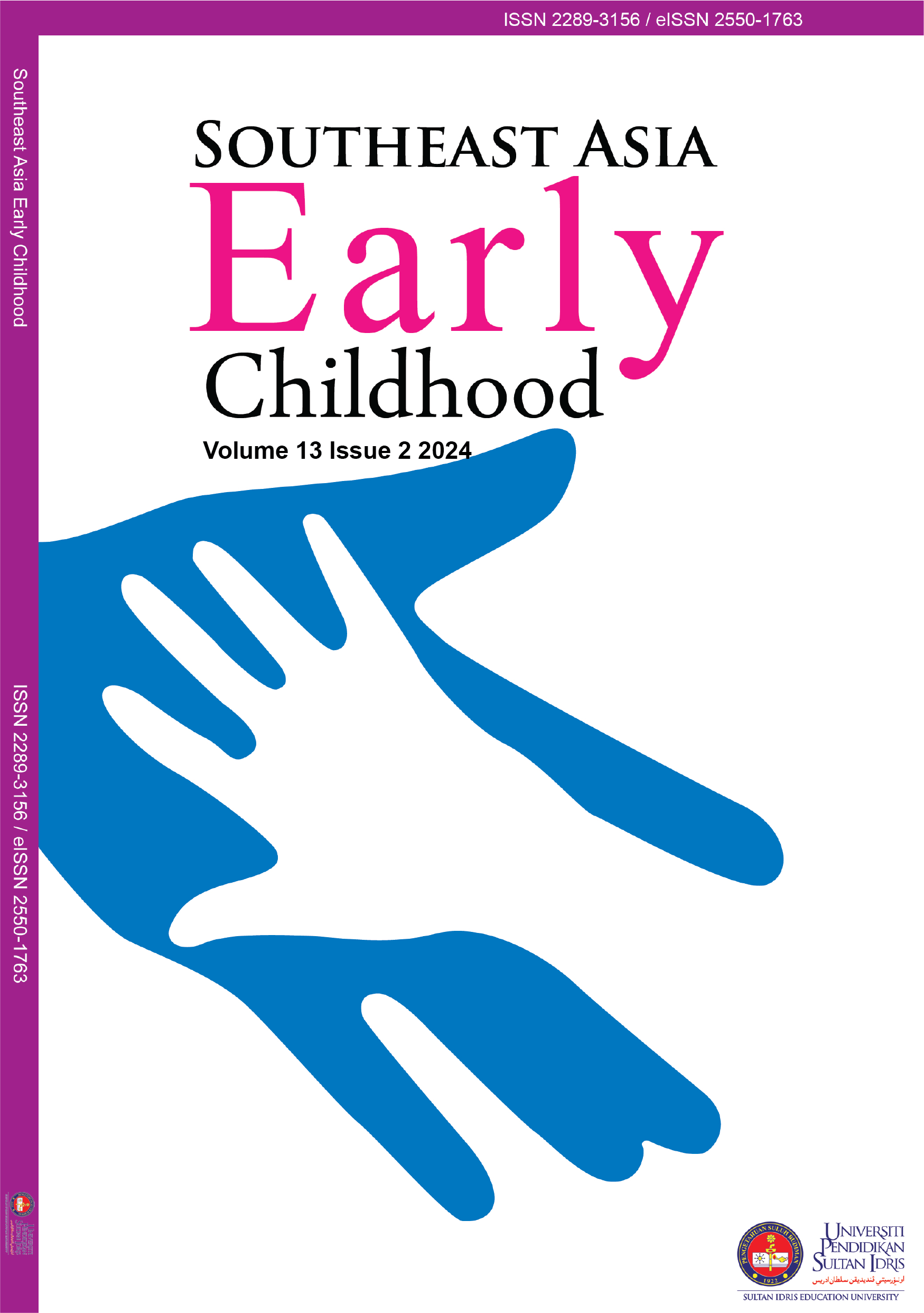The Development and Effectiveness of Interactive Multimedia-Based Nutrition Education Module (IMNEM): A Concept Paper
DOI:
https://doi.org/10.37134/saecj.vol13.2.8.2024Keywords:
Multimedia module, nutrition education, malnutrition, stuntingAbstract
Globally, malnutrition is an issue that has never been overcome, even after a series of efforts by experts, which have never been impressive. The world’s malnutrition burden remains unsatisfactory since malnutrition is solely responsible for more illnesses than other reasons. Malnutrition continues to be a significant problem in Malaysia. The most common manifestation of chronic malnutrition in children is stunting, a lifetime problem for a child in Malaysia. Stunting is an irreversible condition in which a child cannot regain their height in the same way that they can regain weight. Notably, various factors have been identified associated with the risk of stunting among Malaysian children. This includes socio-demographic background, gestational characteristics, maternal and infant diet, feeding practice, illness, and infection. As discovered through the literature review, stunted children face many disabilities, such as learning deficiencies, which affect their productivity for economic prosperity, mostly falling sick more often, losing opportunities to learn, performing poorly in school and growing up to be backward, and more likely to suffer from diet-related Non-Communicable Diseases (NCDs). Therefore, this study will develop and evaluate the effectiveness of interactive multimedia-based nutrition education on Knowledge, Attitude, and Practice (KAP) about nutrition, growth monitoring, breastfeeding, and child-feeding practices among mothers with stunted children using the ADDIE model. This study will employ a quasi-experimental research method consisting of control and treatment groups. The study will be conducted in maternal child health clinics in the Seberang Perai district in Pulau Pinang. The population of this study consists of mothers with stunted children under five years old. In this study, convenience sampling will be used to recruit the target population, and the sample size was determined using G*power.
Downloads
References
Abu-Saad, K., & Fraser, D. (2010). Maternal Nutrition and Birth Outcomes. Epidemiologic Reviews, 32(1), 5–25.
Akombi, B. J., Agho, K. E., Hall, J. J., Merom, D., Astell-Burt, T., & Renzaho, A. M. N. (2017). Stunting and severe stunting among children under-5 years in Nigeria: A multilevel analysis. BMC Pediatrics, 17(1), 1–16.
Cochran, W. G. (1977). Sampling techniques. John Wiley and Sons.
De Onis, M., & Blössner, M. (2003). The World Health Organization global database on child growth and malnutrition: methodology and applications. International Journal of Epidemiology, 32(4), 518–526.
Institute for Public Health Malaysia. (2020). NHMS 2019. Institute for Public Health Malaysia.
Kok, D. (2019). Stunting in Malaysia: Costs, Causes and Courses for Action (Vol. 1).
Ministry of Health Malaysia. (2017). Recommended nutrient intakes for Malaysia- A report of the technical working group on nutritional guidelines. In Ministry of Health Malaysia.
Mitra, M., Wan Abdul Manan, W. M., Affizal, A., Mohd Shukri, O., & Maryam, M. (2012). Does nutritional knowledge have relationship with healthy dietary attitude and practices during pregnancy? International Proceedings of Chemical, Biological and Environmental, 39, 159–163.
Mugyia, A. S. N., Tanya, A. N. K., Njotang, P. N., & Ndombo, P. K. (2016). Knowledge and attitudes of pregnant mothers towards maternal dietary practices during pregnancy at the Etoug-Ebe Baptist Hospital Yaounde. Health Sciences and Disease, 17(2), 24–29.
National Coordinating Committee on Food and Nutrition. (2016). National plan of action for for nutrition in Malaysia III. Ministry of Health Malaysia.
Partap, U., Young, E. H., Allotey, P., Sandhu, M. S., & Reidpath, D. D. (2019). Characterisation and correlates of stunting among Malaysian children and adolescents aged 6-19 years. Global Health, Epidemiology and Genomics, 4, 1–11.
Shariff, Z. M., Bukhari, S. S., Othman, N., Hashim, N., Ismail, M., Kasim, S. M., Paim, L., Samah, B. A., Azhar, Z., & Hussein, M. (2008). Nutrition education intervention improves nutrition knowledge, attitude and practices of primary school children: a pilot study. Health Education, 103, 119–132.
Stewart, C. P., Iannotti, L., Dewey, K. G., Michaelsen, K. F., & Onyango, A. W. (2013). Contextualising complementary feeding in a broader framework for stunting prevention. Maternal and Child Nutrition, 9(S2), 27–45.
The World Bank. (2018). Annual report 2018. World Bank Publications.
Turyashemererwa, F., Kikafunda, J., & Agaba, E. (2009). Prevalence of early childhood malnutrition and influencing factors in peri urban areas of Kabarole district, western Uganda. African Journal of Food, Agriculture, Nutrition and Development, 9(4), 975–989.
UNICEF. (2007). The state of the world’s children 2017: Statistical tables. UNICEF.
UNICEF. (2013). The state of the world’s children: Children with disabilities. United Nations Children’s Fund.
UNICEF. (2018). Children without: A study of urban child poverty and deprivation in low-cost flats in Kuala Lumpur. UNICEF.
Wan Muda, W. M., Sundaram, J. K., & Tan, Z. G. (2019). Addressing malnutrition in Malaysia.
WHO. (2023). Infant and young child feeding. WHO.
World Health Organization. (2006). WHO child growth standards : length/height-for-age, weight-for-age, weight-for-length, weight-forheight and body mass index-for-age: methods and development. World Health Organization.
Downloads
Published
How to Cite
Issue
Section
License
Copyright (c) 2024 Susheela Ismail, Nurfarhana Diana Mohd Nor, Nurul Fadhilah Abdullah

This work is licensed under a Creative Commons Attribution-NonCommercial-ShareAlike 4.0 International License.





